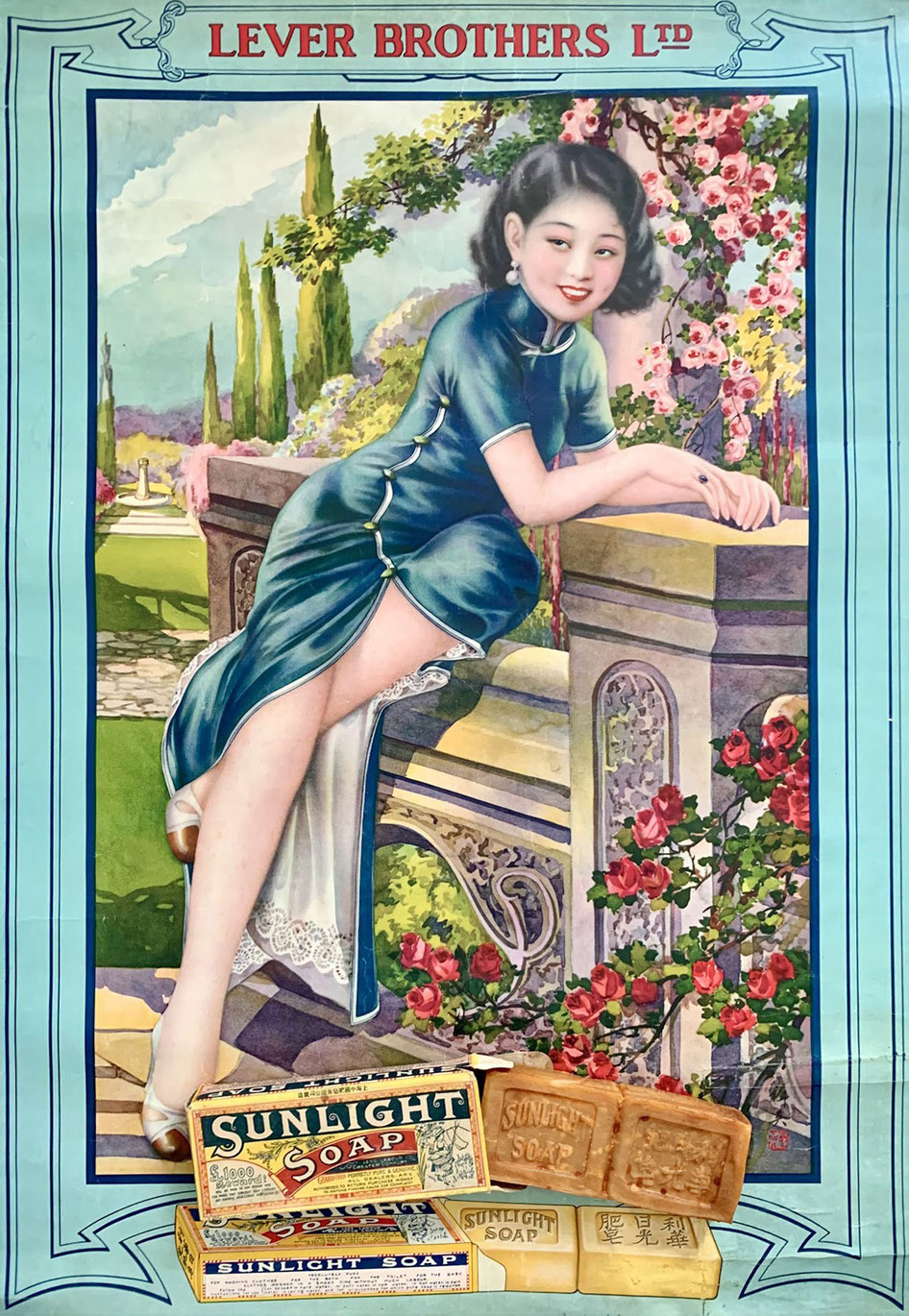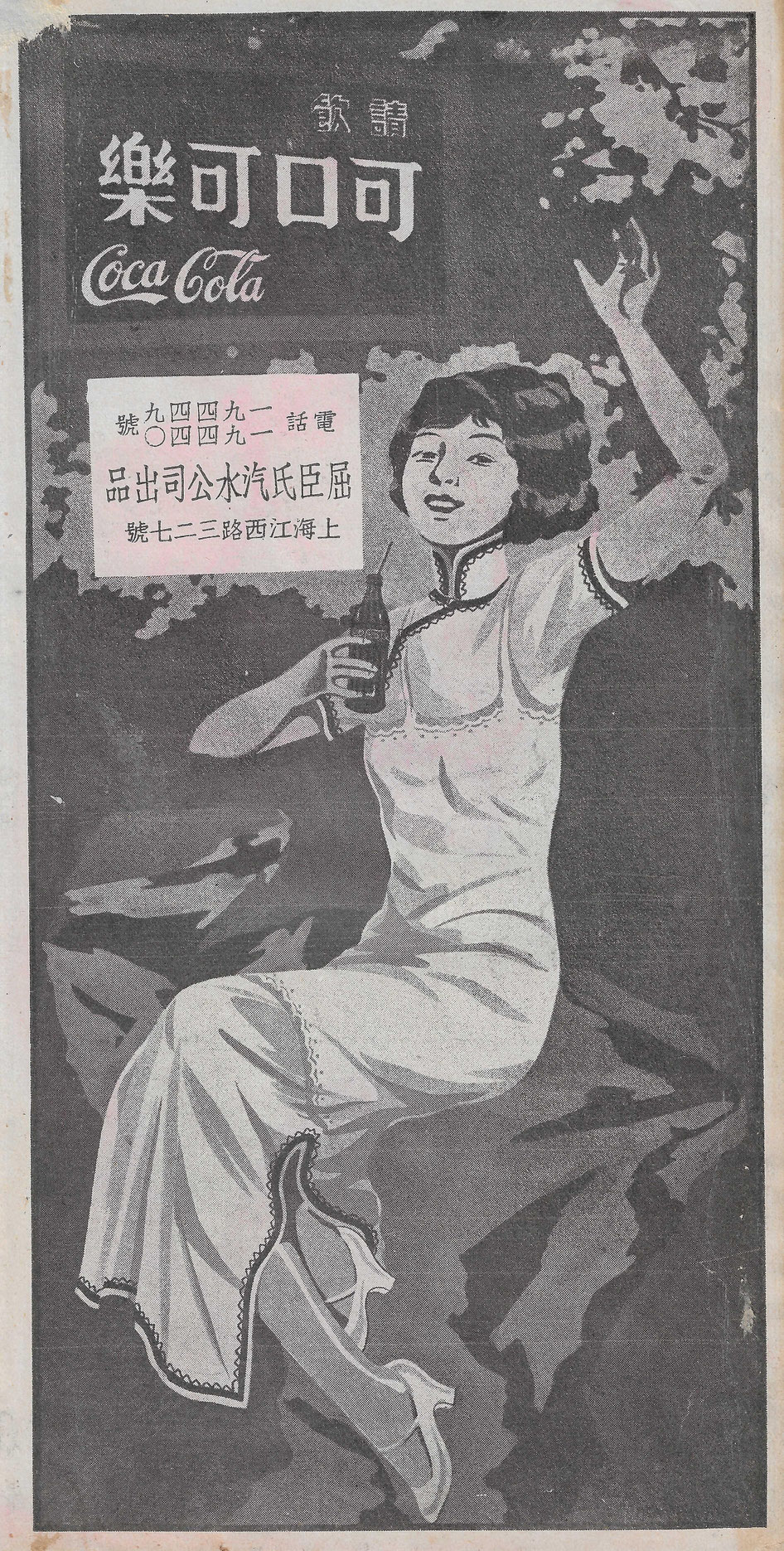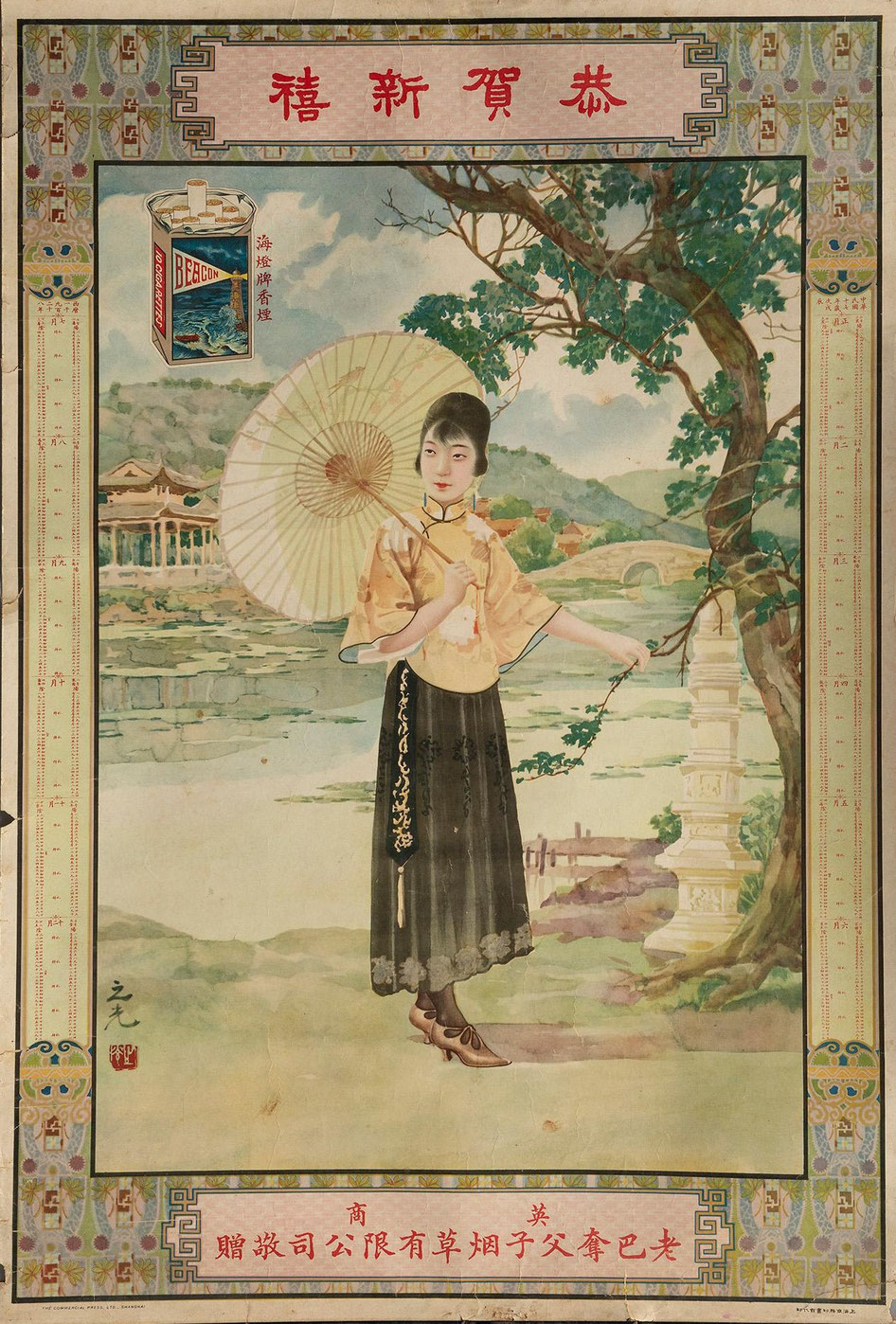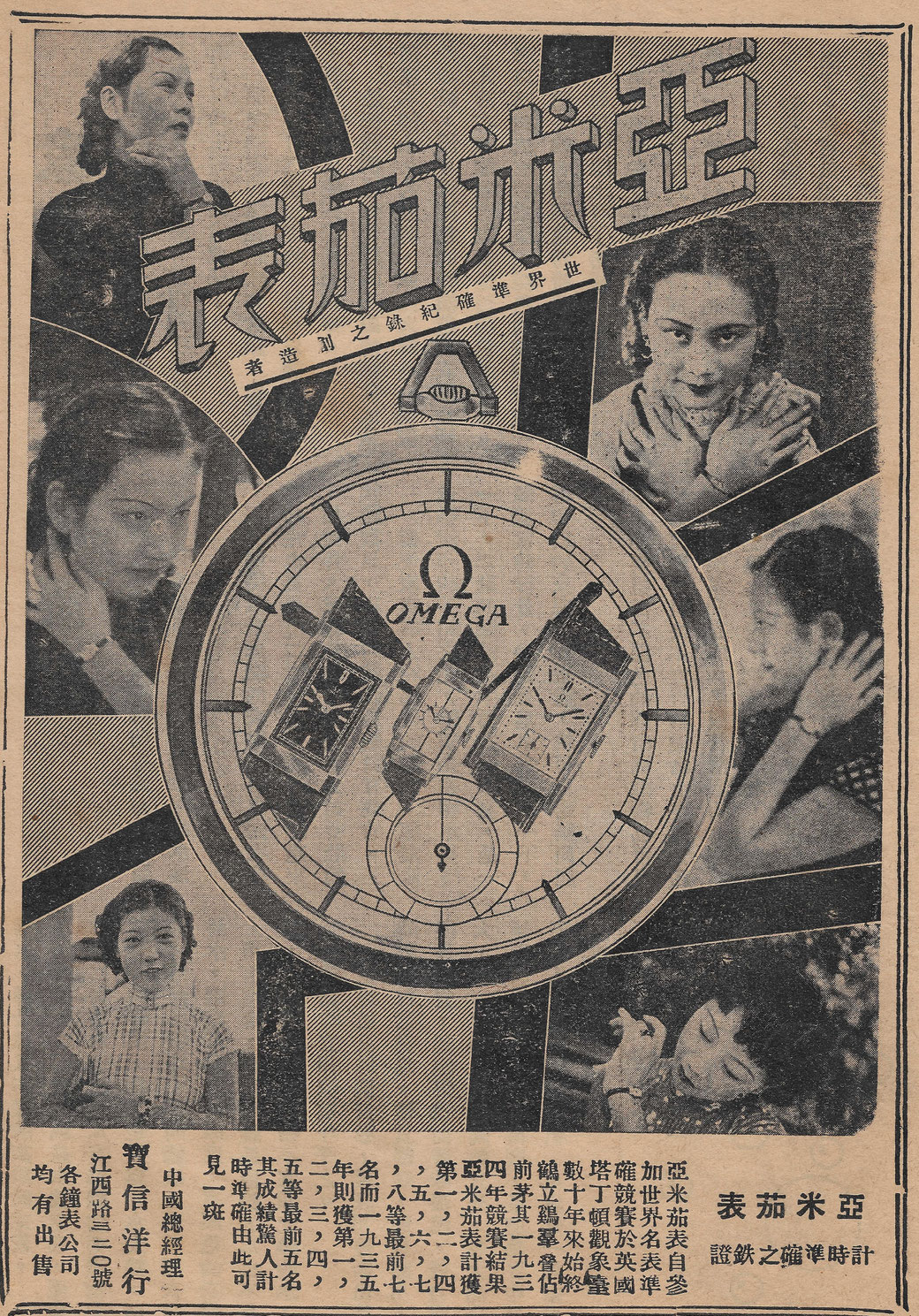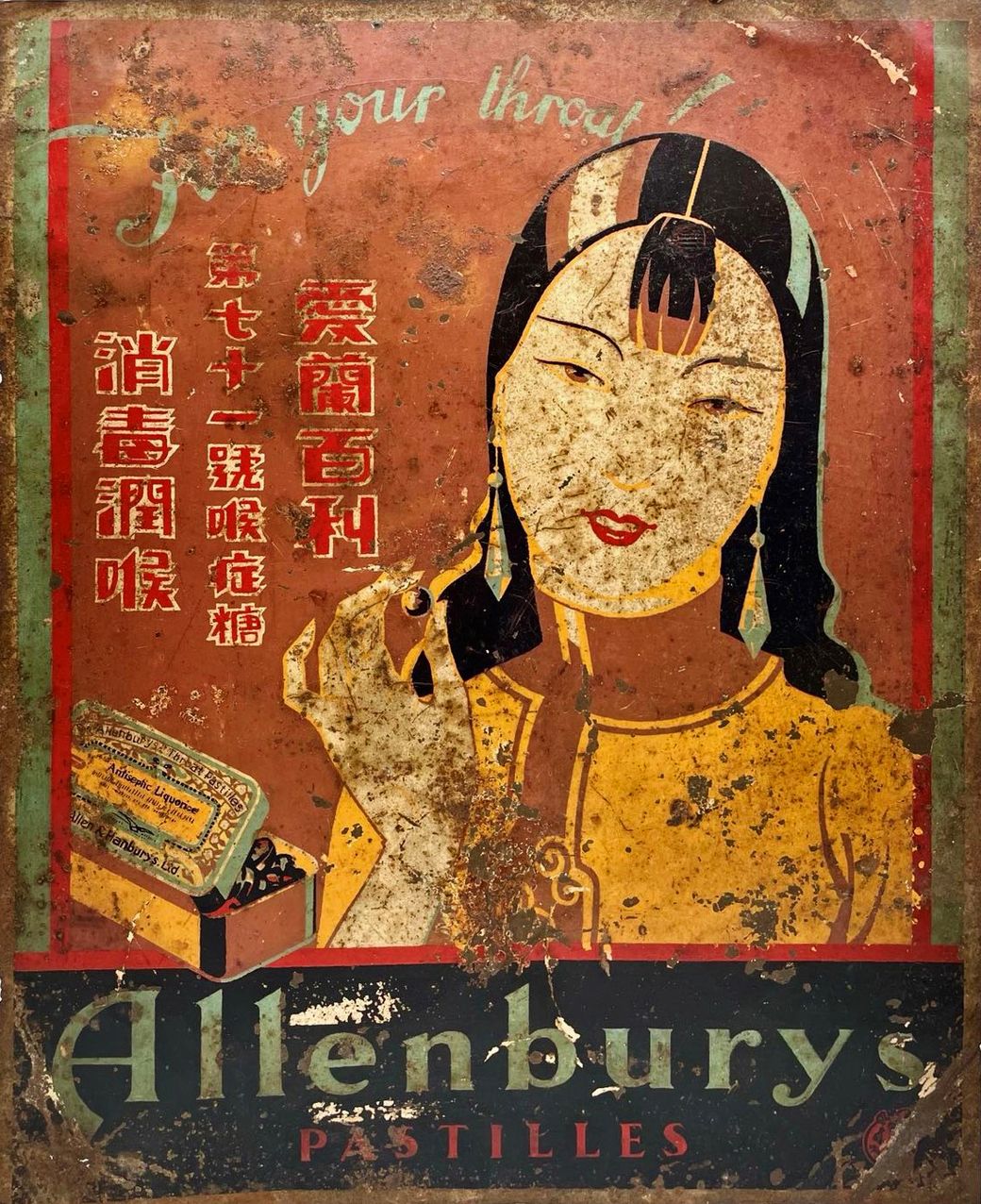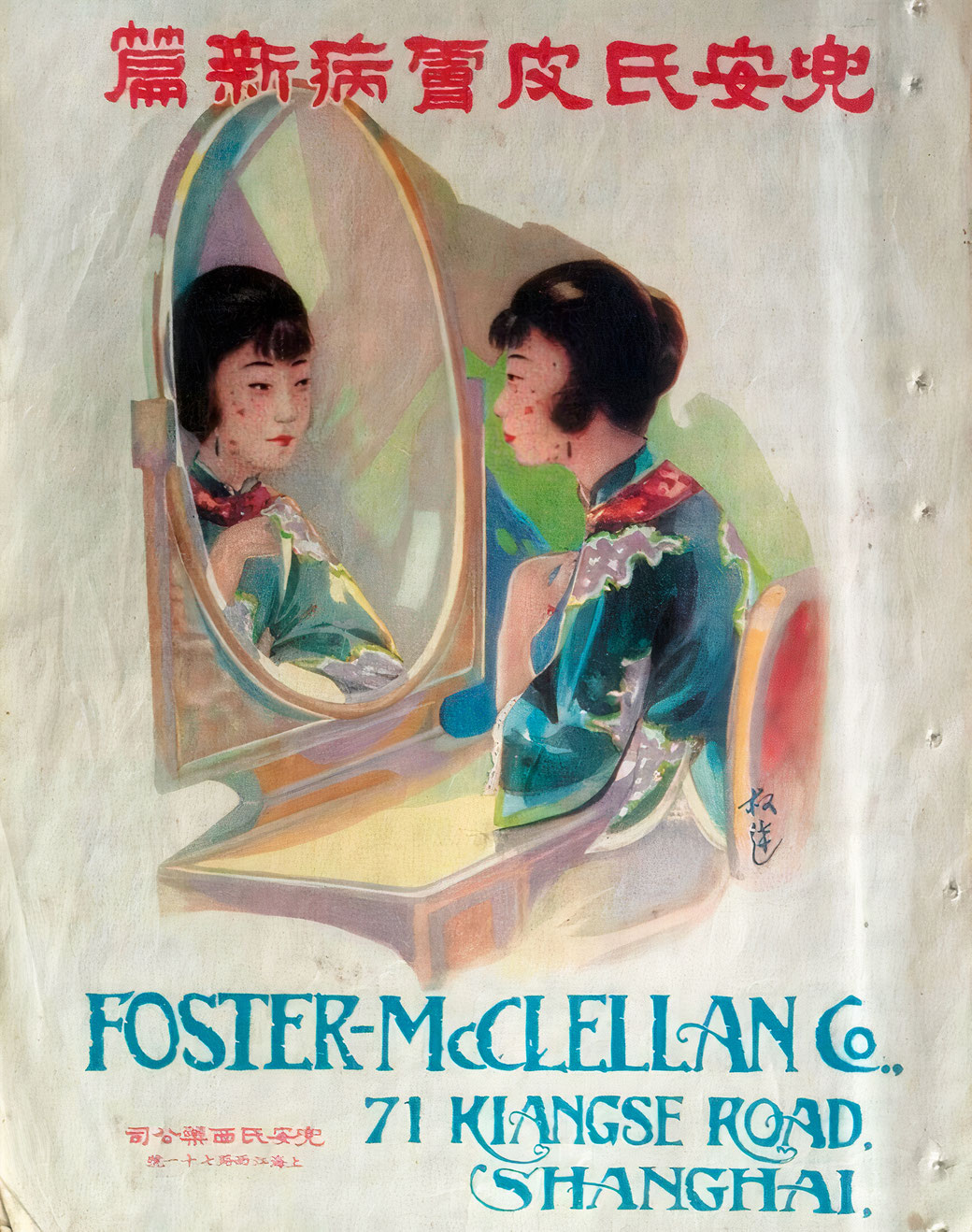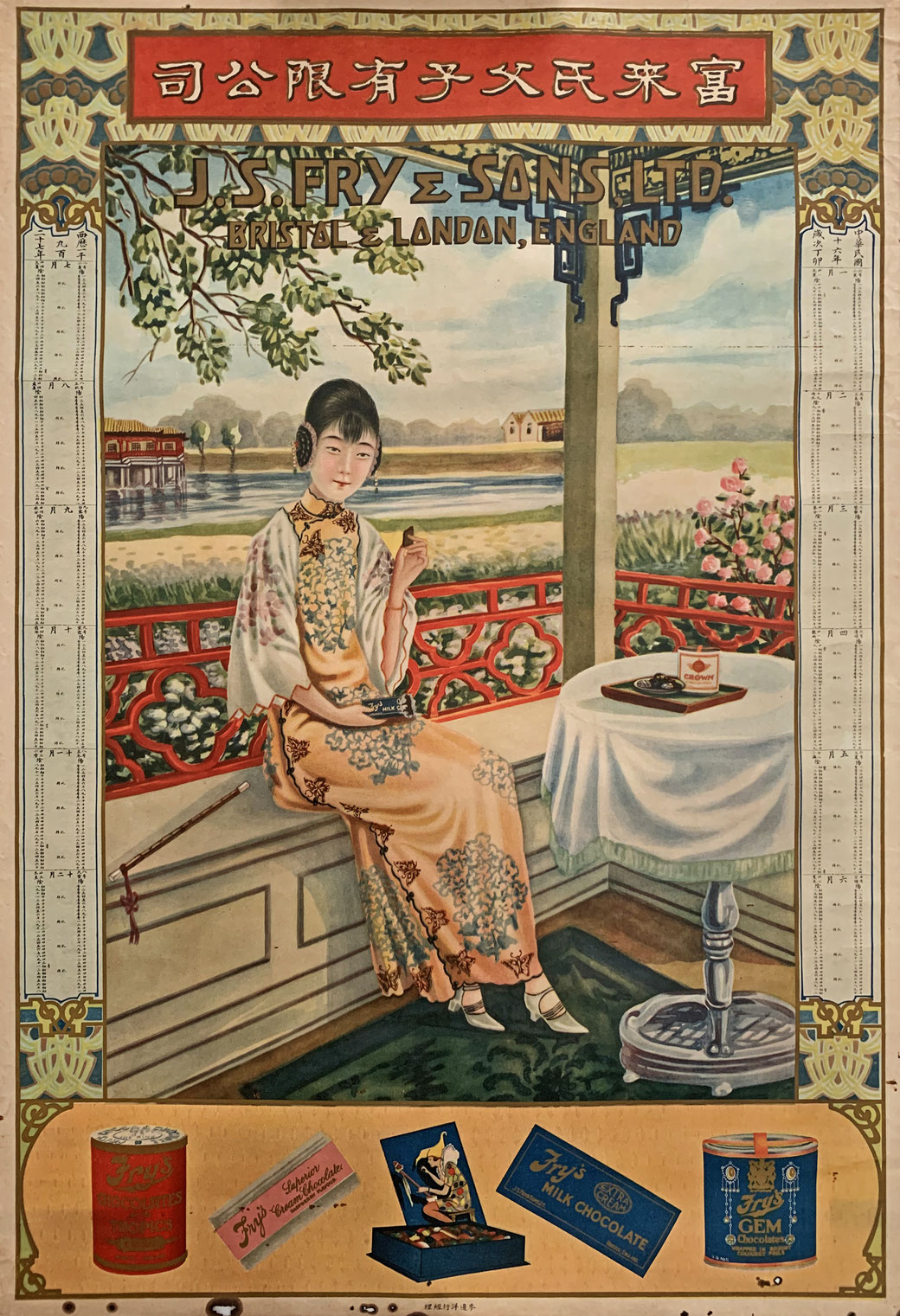26. April 2025
Novartis is one of world’s largest pharma corporations and was formed in 1996 by the merger of Ciba-Geigy & Sandoz – originally three independent businesses all from the same small town of Basel, which is strategically located in Switzerland on the border to France and Germany. The surprisingly progressive 1929 calendar poster advertisement from our collection was produced for the most successful of these companies in China…
08. November 2023
If you look closely you will discover, that not only do we have this very rare 1930s Chinese Lever Brothers advertisement in our collection, but also an original matching soap bar, just as depicted on the poster. The company was once the largest soap producer in China and its traces remain visible in the country to this day. We have retold its 150-year long history, internationally and in the Middle Kingdom specifically across multiple posts in the past: Lever's Health Soap still sold here The...
08. July 2023
This intriguing 1928 calendar poster, advertising the „Beacon” cigarette brand, was not only created by the most versatile Chinese commercial artist of the 20th century, but also leads us to explore the story of the first and largest foreign-founded tobacco manufacturer in China.
12. June 2023
This rare 1927 Palmolive poster from our collection, not only stems from a very short-lived period of the brand, but was also designed by the most prolific commercial artist of Republican China. Follow along for a deep-dive into this golden age of Chinese advertising.
08. May 2023
Omega watches have a close to 130-year long history in China and since the Roaring Twenties have relied heavily on Chinese celebrity endorsements. For this week’s post about an artifact from our collection we are asking you for help identifying all the glamorous icons featured in this all-star ad. But first a quick background on the famous luxury watch brand. In 1848 a young watchmaker named Luis Brandt opened a workshop called “La Generale Watch Co” in the small Swiss village of La...
10. April 2023
This exceptionally rare 1917 calendar poster for State Express 555 cigarettes from our collection, tells the unlikely story of a Western brand that, with one simple trick, became a top-seller in China and was even endorsed by the country’s most notorious “influencer” … State Express were luxury cigarettes manufactured in the United Kingdom by the Ardath Tobacco Company. The brand was founded in London in 1896 by tobacco merchant Sir Albert Levy (1864–1937).
27. February 2023
This beautiful mid-1920s Art Deco style advertisement sign for Allenburys tells the astonishing story of the once wealthiest foreign family of Old Shanghai. They were highly esteemed, with numerous schools, two streets, an office building, and even a coffee house named after them. Yet, their name has almost been forgotten, if it weren’t for the rare artefacts that sometimes still show up in the antique markets and the few remnants of their legacy strewn across the vanishing old city.
30. January 2023
A lovely and innocent Chinese girl in 1920s fashion, advertising a skin medication by Foster-McClellan in Shanghai. A check in the historic “List of American firms at Shanghai” by the US consul identifies the company as “importers of patent medicines”. What dark secrets could this fair facade possibly mask?
12. December 2022
A sophisticated Old Shanghai lady relaxing with a bite of Fry’s chocolate at her country home. Her bamboo flute (or is it maybe an opium pipe?) close beside her. What in 1927 may have sounded like an intriguing value proposition for J.S. Fry & Son’s in the Middle Kingdom, turned out to be nothing but a pipe dream…. Joseph Fry from Bristol, England started making chocolate around 1759. After several changes of name and ownership, the business became J. S. Fry & Sons in 1822. In...


